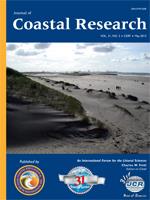Carobene, L., 2015. Marine notches and sea-cave bioerosional grooves in microtidal areas: Examples from the Tyrrhenian and Ligurian coasts—Italy.
Modern and ancient marine notches are present along the cliffs and inside the sea caves of the Gulf of Orosei in Sardinia, the Gulf of Gaeta in Lazio, and in Western Liguria. A morphological quantitative study was undertaken to define the shape and size of notches and their altimetric correlation with the sea-level highstands that created them. The geometrical aspects of the notches along cliffs and the relationship between the mean sea level and the shape of the notch have allowed us to deduce that the main erosion process giving rise to the marine notches is wave action. Conversely, the bioerosive process is the most important cause leading to notch formation inside sea caves. These two types of notch differ in terms of their shape and size and while the former mainly develops above mean sea level, the latter extends below the mean high tide level. For the latter, we have proposed the term “sea-cave bioerosional groove.” The identification of the ancient grooves in the caves studied has provided a contribution to the understanding of the interglacial eustatic peak MIS 5.5. In the submarine part of limestone cliffs, the process of bioerosion attributable to marine borers has also been documented. This brings about the formation of underwater notches similar to the bioerosional grooves encountered in the caves. Analyses of the shape of marine notches have led to the identification of three stages of development, which in this paper are called “embryonic notch,” “complete notch,” and “mature notch.”





